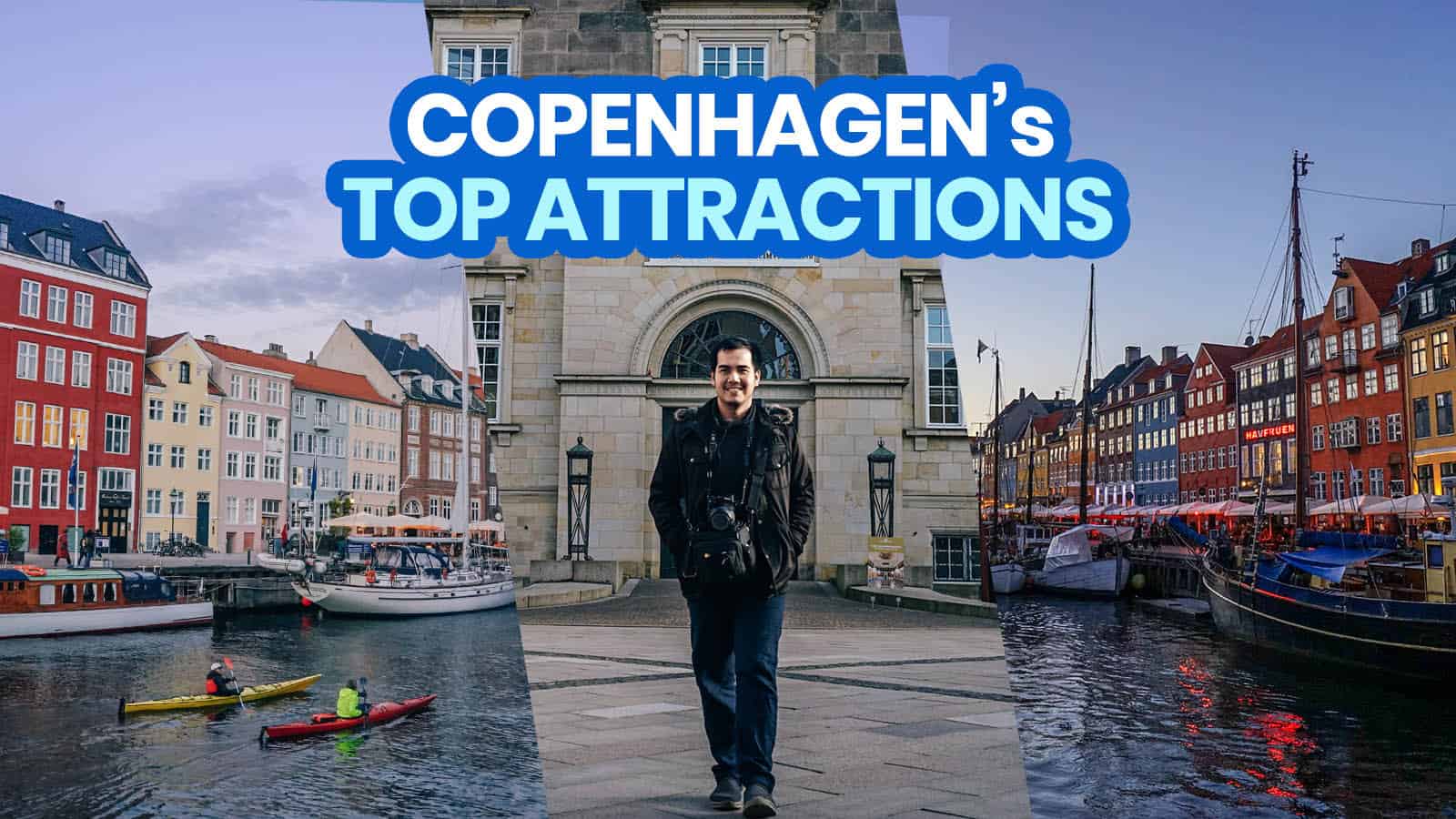Originally a Viking fishing village in the 10th century, Copenhagen flourished into one of the most developed (and most expensive) cities in the world. Throughout history, it has always been the center of Denmark’s trade and government. The Danish capital is also the largest city in the country in terms of population and one of the financial and economic hubs of Northern Europe.
The city’s historic core is called Indre By, where early developments began. The harbor and the canals played a big role in the industrialization and progress of the city. Its map is dotted with cultural and historical landmarks. Modern design and architecture do not clash against the traditional but rather exist in harmony with one another.
Copenhagen food scene is not to be missed too, especially the pastries and the beer! If you’re planning a Euro tour and considering a stop in Copenhagen, here are some of the best things to do and places to visit here! In this post, we’ll be including basic transportation details for DIY, but we’re also adding links to guided tours and tickets if you wish more comfort and convenience.
COPENHAGEN CITY TOURS
1. Copenhagen Walking Tour
Joining a walking tour is one of the best options to experience the city. This activity normally covers the city’s famous landmarks and highlights within a few hours. You will get to see the most iconic cultural and historic sites while your knowledgeable guide entertains you with stories and shares tips and recommendations.
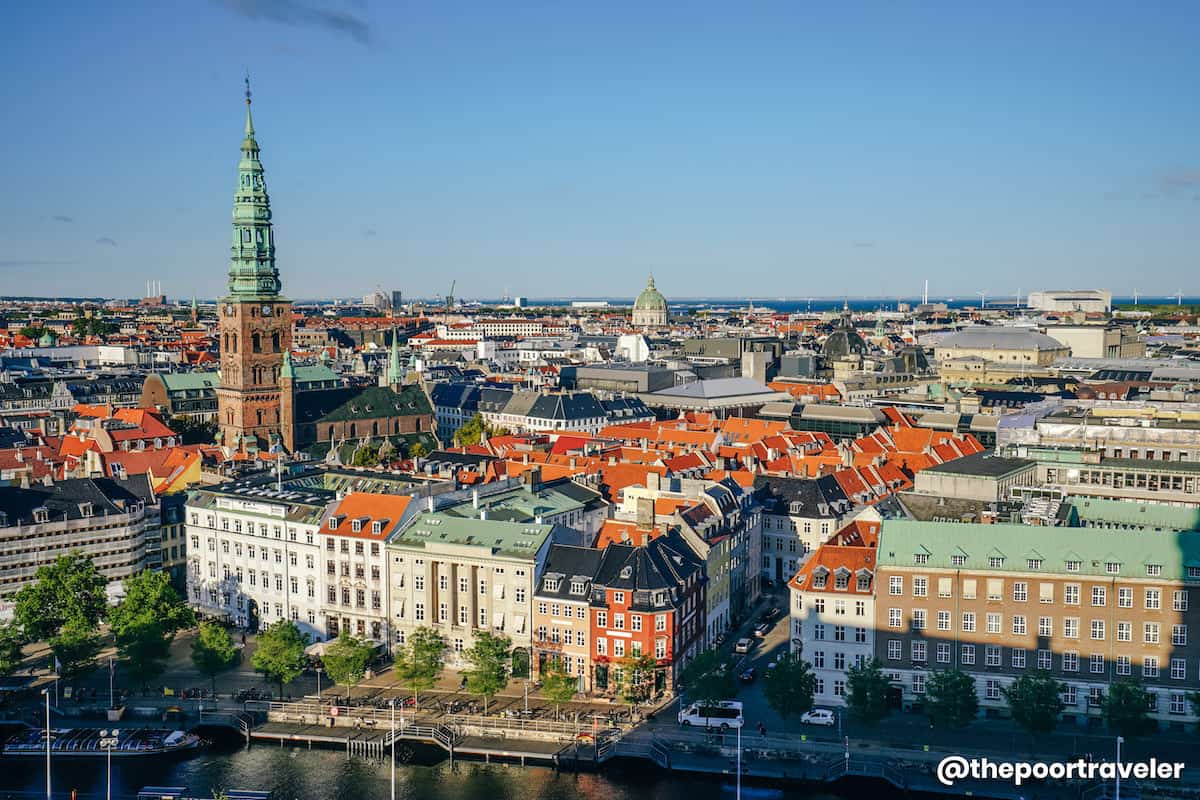
FREE walking tours are available in Copenhagen too. For the uninitiated, free tours are free only in theory. You’re still expected to give a tip at the end of the walk as it is the only way the guide earns money. There is no set amount. How much to give depends entirely on how much you enjoyed the tour. But more often that not, free tours attract big crowds.
If you are not really a fan of big group tours, some tours are offering a small-group walking tour around Copenhagen. Besides the famous spots and the beautiful cobblestone streets, you will stroll along the picturesque waterfront and canals. Another walking tour will regale you with stories not found in history books.
✅ Check Rates of SMALL GROUP WALKING TOUR Here!
✅ Check Rates of UNTOLD STORIES TOUR Here!
2. Hygge and Happiness Walking Tour
A distinct characteristic of Danish culture, hygge is pretty difficult to translate to English, so we’ll let the Merriam-Webster Dictionary define it: “a quality of coziness that makes a person feel content and comfortable”.
It is also usually associated with coziness, whether alone or with company. If you want to discover and get to the very core of it, one great way is through a fun walking tour that focuses on it.
The Hygge and Happiness Walking Tour can be booked conveniently online! It lets you see for yourself why Denmark is one of the happiest countries in the world! Learn more about the local culture from the professional guide as you wander around the city and have a danish pastry at a local café. Here are some of the areas included in the itinerary:
- Nyboder District
- Kongens Have
- Strøget
3. Canal Tour
Got limited time but looking for a unique way to explore the city? If you have some budget to spare, you may opt to go on a canal tour to see Copenhagen’s iconic landmarks such as historic churches, old houses, and magnificent castles as you sail along the harbor and scenic canals.
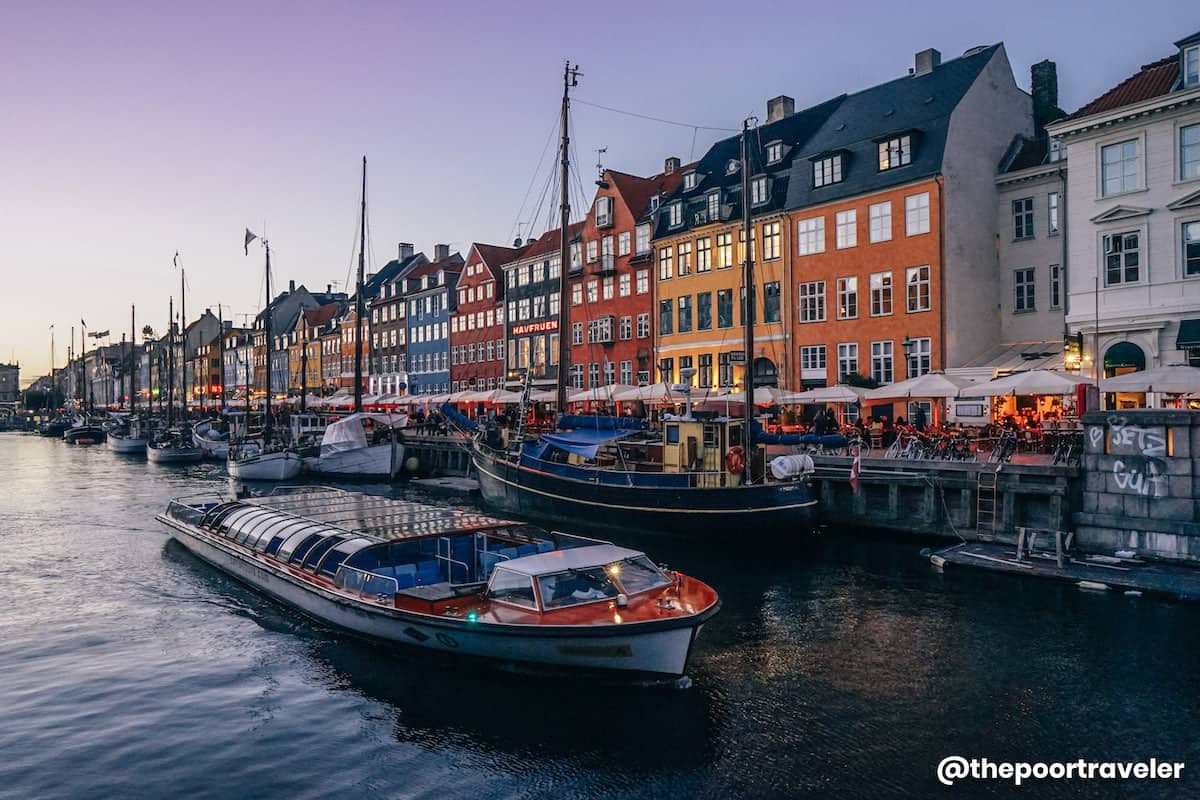
The tour below is offering a package that bundles a canal tour with a skip-the-line entrance ticket to Tivoli Gardens. You will be accompanied by a knowledgeable guide giving you backstories, trivia, and interesting facts. Here are some of the landmraks you’ll see during the tour:
- Copenhagen Opera House
- Amalienborg Palace
- Christiansborg Palace
- Black Diamond Library
- Little Mermaid statue
After the one-hour canal tour, make sure that you get your free entrance ticket to Tivoli Gardens and enjoy yet another relaxing time inside the park.
✅ RESERVE CANAL TOUR + TIVOLI GARDEN TICKET HERE!
4. Nørrebro
One of the most popular and hippest neighborhoods in Copenhagen, Nørrebro (Northern Gate) is a melting pot of cultures. It is located northwest of Indre By (city center) and connected to it by Dronning Louise’s Bro (Queen Louise’s Bridge).
After the city’s demarcation line was dissolved in 1852, development started in this part of town and waves of local and foreign workers arrived in the neighborhood. Presently, a big fraction of the area’s population are immigrants. This is very apparent when you wander around the neighborhood, especially the main street Nørrebrogade, where various shops, restaurants, cafés, and boutiques.
At night, the side streets are buzzing with residents and visitors indulging in drinks and companionship in one of the many late-night bars. The neighborhood is a favorite among creative peeps, foodies, and trendy youths. Here are some of the famous spots in Nørrebro:
- Assistens Cemetery (Assistens Kirkegård)
- Jægersborggade
- Elmegade
- Blågårdsgade
- Dronning Louises Bro
- Superkilen Park
You can make a quick tour of Nørrebro by booking the Copenhagen Nørrebro Neighborhood Tour. Just follow the link below.
5. Food Tour
Some of us might know a thing or two about Danish cookies, but there’s more to the Danish culinary scene than the well-known pastries. And what better way to get a taste of Danish culture than to dig in to local dishes and delicacies!
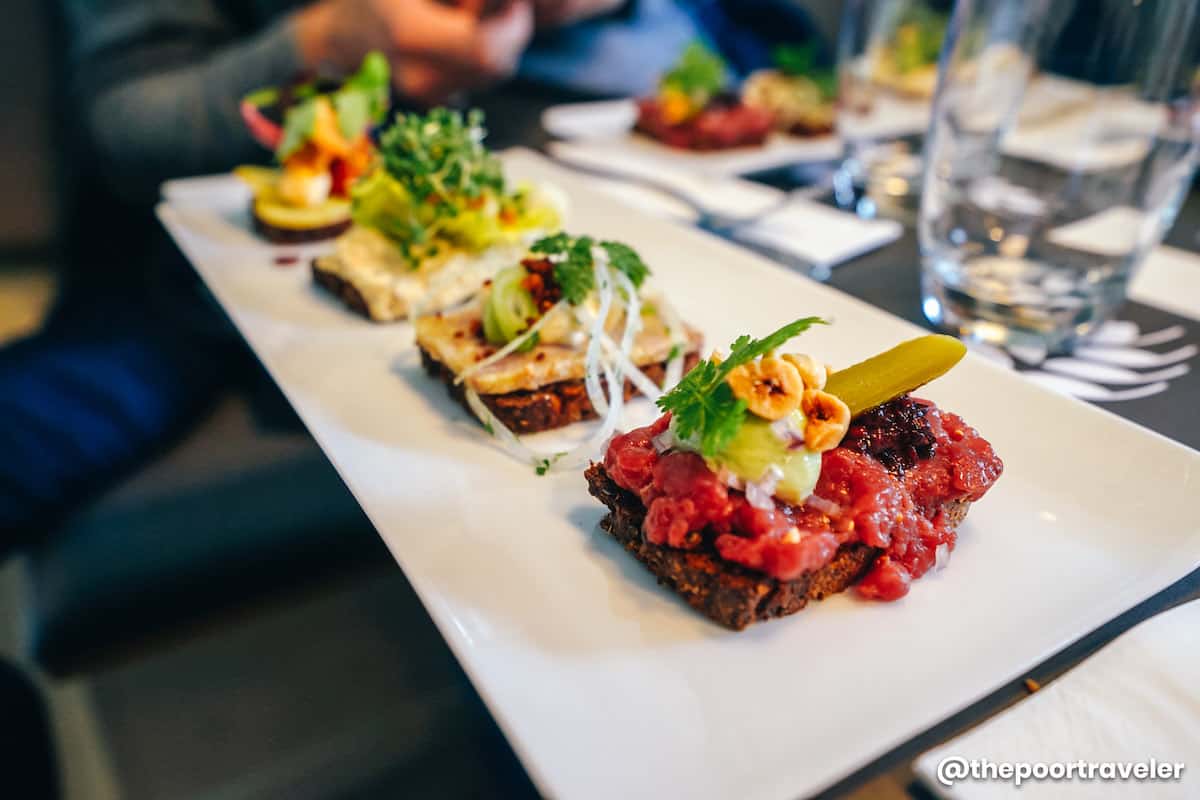
Joining a food tour will not only take you to the popular food places in the city but will also give you information about the Danish dishes served at each stop — ingredients, preparation, and cooking methods. And while you sample and taste these local treats, your guide will also explain to you the history and cultural significance of the dish you are eating.
You can book your food tour online! The package below includes a foodie’s guide and covers five well-known food places serving authentic Danish cuisines. You may also sample the locally-brewed beers!
✅ CHECK RATES or RESERVE HERE!
6. Vesterbro
Located west of Indre By, Vesterbro (Western Gate) is another hip neighborhood famous for its vibrant graffiti art scene and nightlife. After the abolition of the demarcation line, the population increased and development started. Most of the residents are locals.
Formerly known as the red-light district of Copenhagen, Vesterbro flourished into a busy neighborhood where streets are lined with pubs and bars, local and international restaurants, fashion boutiques, indie stores, art galleries, and quirky shops.
One of the favorite activities in the neighborhood is the brewery tour or pub tour, basically anything related to beer. Here are other famous places in Vesterbro:
- Istedgade
- Kødbyen (Galleri Bo Bjerggaard, V1 Gallery)
- Værnedamsvej
- Sønder Boulevard
- Carlsberg Brewery
- Museum of Copenhagen
- Sorte Hest
You can make a quick tour of Vesterbro by booking this Copenhagen Vice and Vesterbro Walking Tour, which specifically caters to small groups. You can also chug a glass of beer when you visit two popular pubs in the neighborhood.
PLACES TO VISIT
7. Christiansborg Palace
The seat of Danish power — both the monarchy and the government.
The palace dates back to the 12th century, but the construction of the present structure began in 1907 and was completed in 1928. Formerly the Danish royal residence, some areas are still being used by the monarchy for royal events and affairs. These include the Palace Chapel, the Royal Reception Rooms, and the Royal Stables.
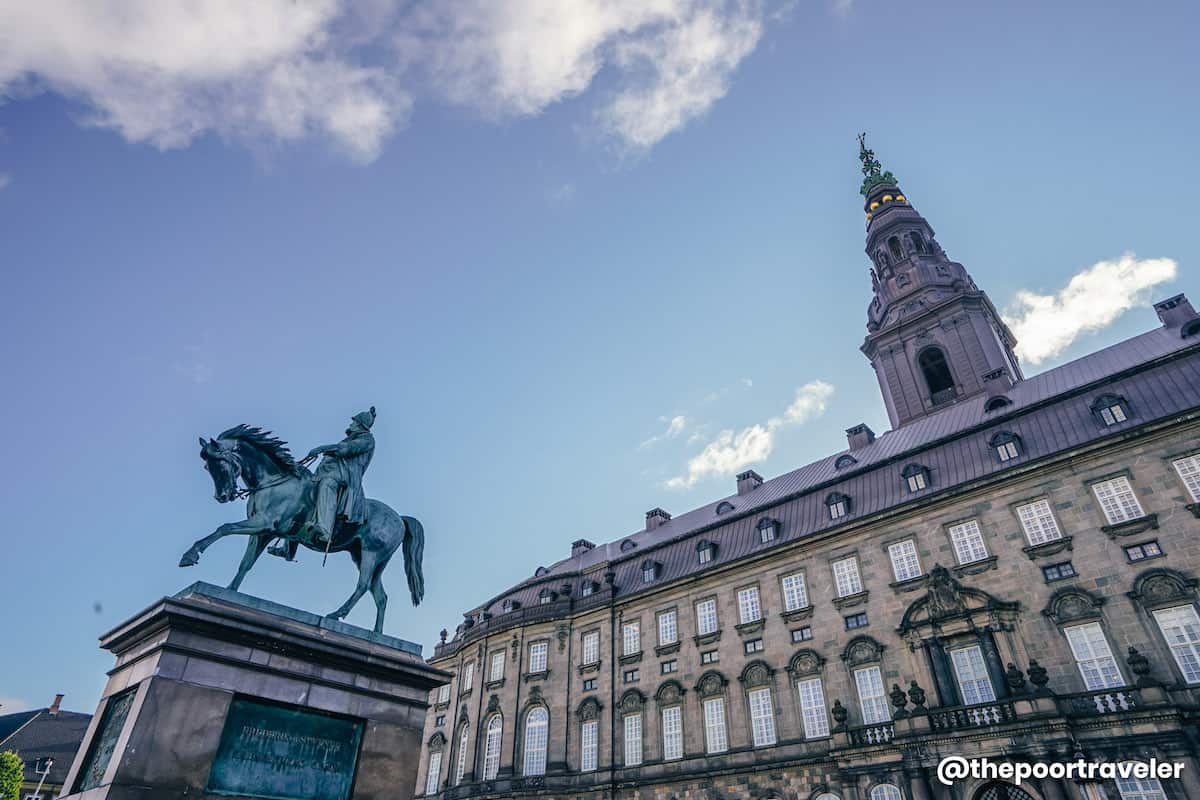
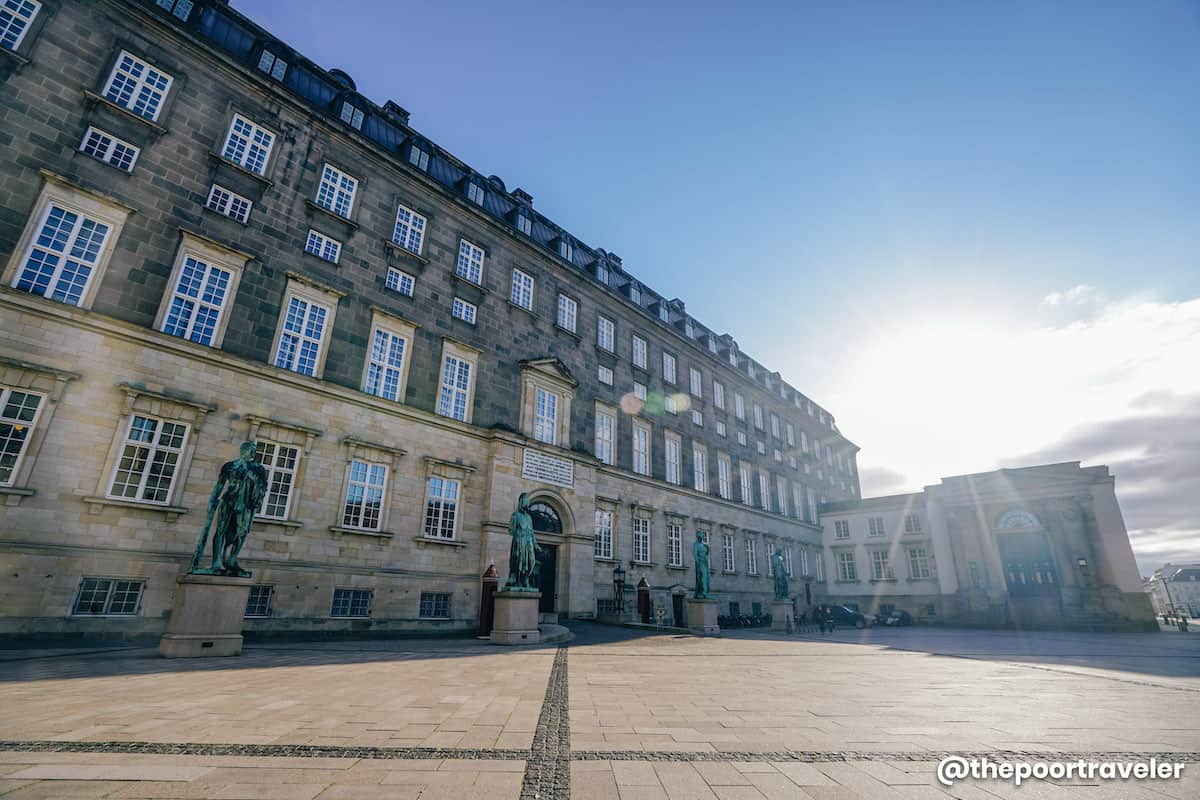
Currently, it houses all three branches of the Danish government — the Danish Ministry of State (executive), the Danish Parliament (legislative), and the Supreme Court of Denmark (judicial). Talk about power!
But there are areas of the palace that are still accessible to the public: the Royal Reception Rooms, the Royal Kitchen, the Ruins, the Royal Stables, and the Palace Chapel.
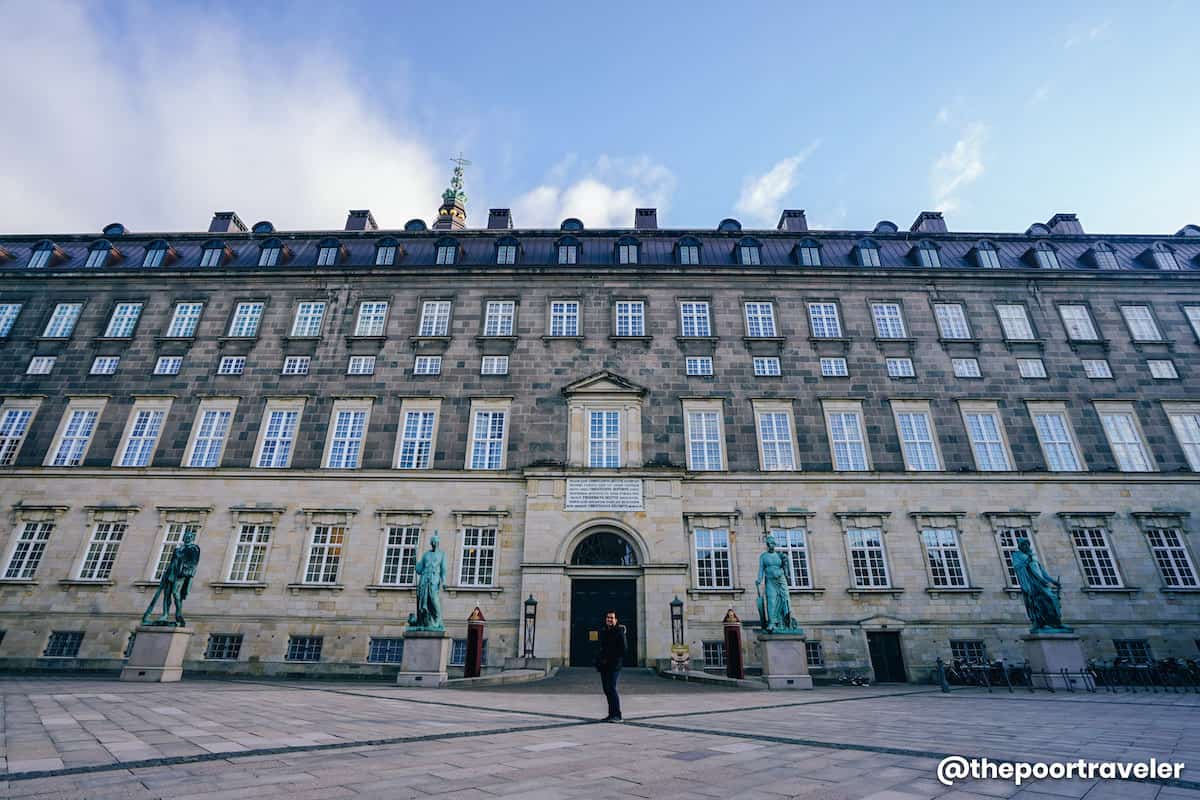
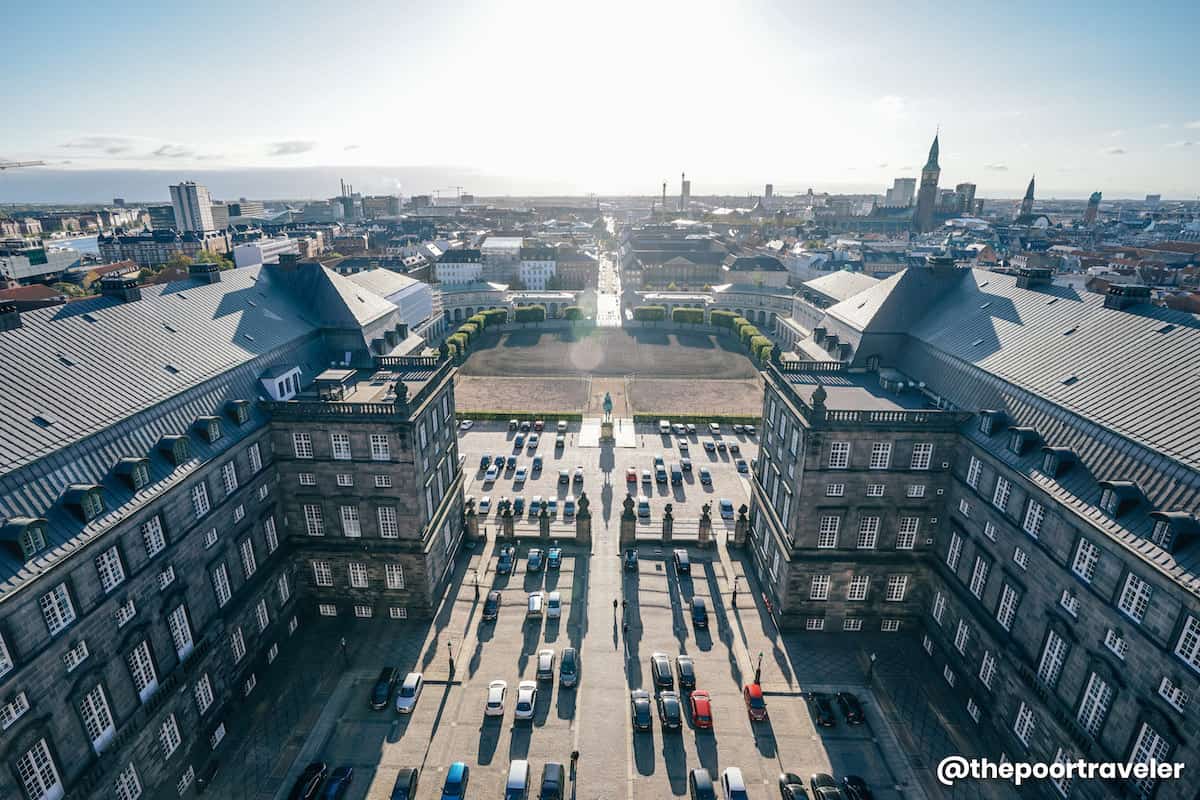
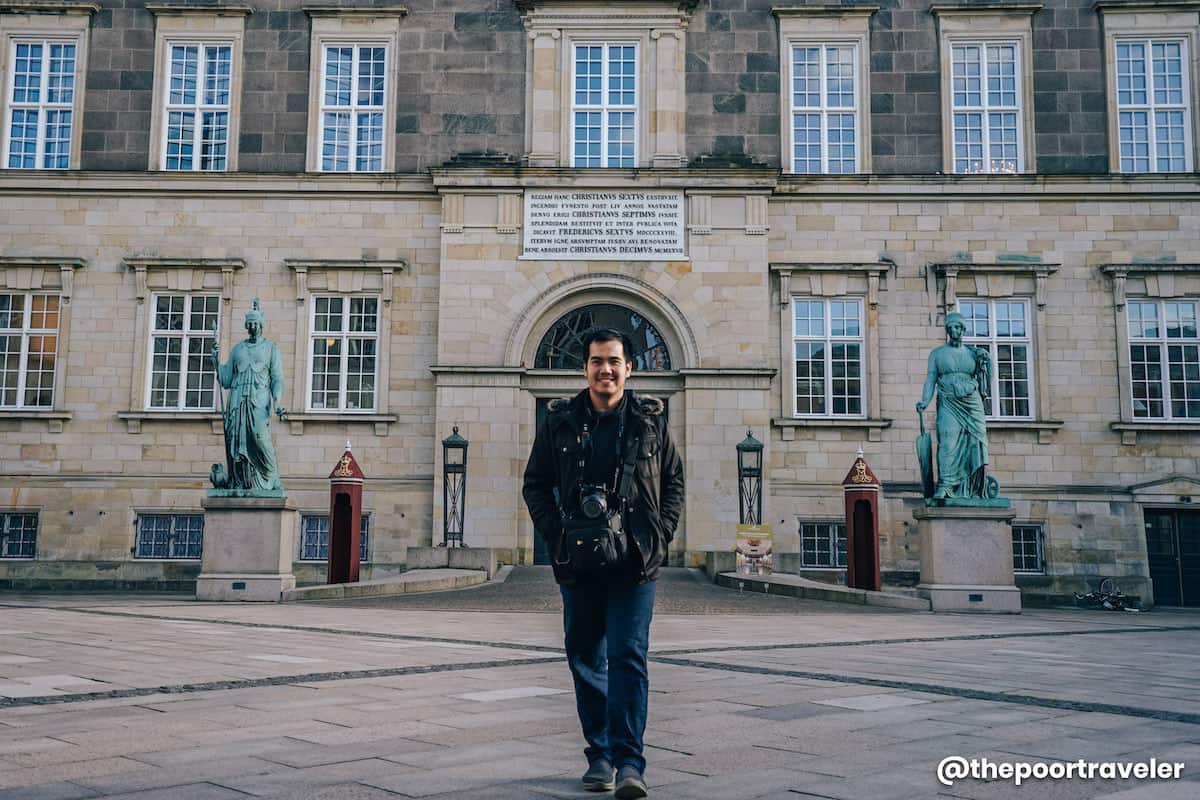
Here are other notable parts of the palace:
- The Oval Throne Room
- The Throne Room
- The Tower Room
- The View
- The Marble Bridge
- The Parliament
Address: Christianborg Palace, Prins Jørgens Gård 5, 1218 København, Denmark
Opening Hours: Opening hours vary per area and per season. The usual opening time is 10AM, while the usual closing time is 4PM or 5PM. Note that the schedule might change, so please check the official website first before going.
Entrance Fee: All areas that are open to the public have entrance fees except the Palace Chapel. If you want to see all of them, it’s best to get a combination ticket. A combination ticket is KR 160 for adults, KR 140 for students, and FREE for guests below 18 years old.
Nearest Train Station: Copenhagen Central Station or Gammel Strand Metro Station
Official Website: www.kongeligeslotte.dk
8. Tivoli Gardens
Launched in August 1843, Tivoli Gardens (or simply Tivoli) is one of the world’s oldest operating amusement parks. This historic park is also one of the most visited in Europe, attracting millions of tourists from around the globe. Considered one of the national treasures in Denmark, it is a vast property featuring lush gardens and green spaces, a lake, historic structures, exciting rides, and performing arts venues.
The amusement park and gardens continue to bring joy and entertainment to visitors of all ages. Even Hans Christian Andersen, the world-famous author of beloved fairy tales like The Little Mermaid, Thumbelina, The Princess and the Pea, and many others, had visited Tivoli. It is also said that this is one of the inspirations of Walt Disney for creating Disney World.
Address: Tivoli Gardens, Vesterbrogade 3, 1630 København V, Denmark
Opening Hours: 11:00 AM – 8:00 PM (Summer Season). Note that Tivoli Gardens’ opening days and hours differ per season. Check the schedule first before booking/going.
Entrance Fee: Regular (8 y/o and up) KR 135 (Monday – Friday), KR 145 (Saturday – Sunday); Child (3-7 y/o) KR 60. Note that the entrance fee is not inclusive of ride tickets. Free entrance for children below three years old.
Ride Ticket: KR 295 (Unlimted Ride Plus), KR 245 (Unlimited Ride)
Nearest Train Station: Copenhagen Central Station, Vesterport Station, or København H Metro Station
Official Website: www.tivoli.dk/en
If you don’t want to wait in line, especially during peak season, you can reserve your ticket online before your trip.
9. Nyhavn
Stretching about 450 meters between Kongens Nytorv (King’s New Square) and Nyhavn Ferry Terminal, this historic canal used to be a bustling commercial port. In the 17th century, the waterfront was filled with sailors, merchants, and of course, pubs.
Centuries after, Nyhavn is still a busy waterfront and entertainment district, flocked by tourists all year. The canal today is lined with cafés, restaurants, and bars. You might even spot historical wooden ships when you stroll along the canal. Marking the end of the canal is the Memorial Anchor.
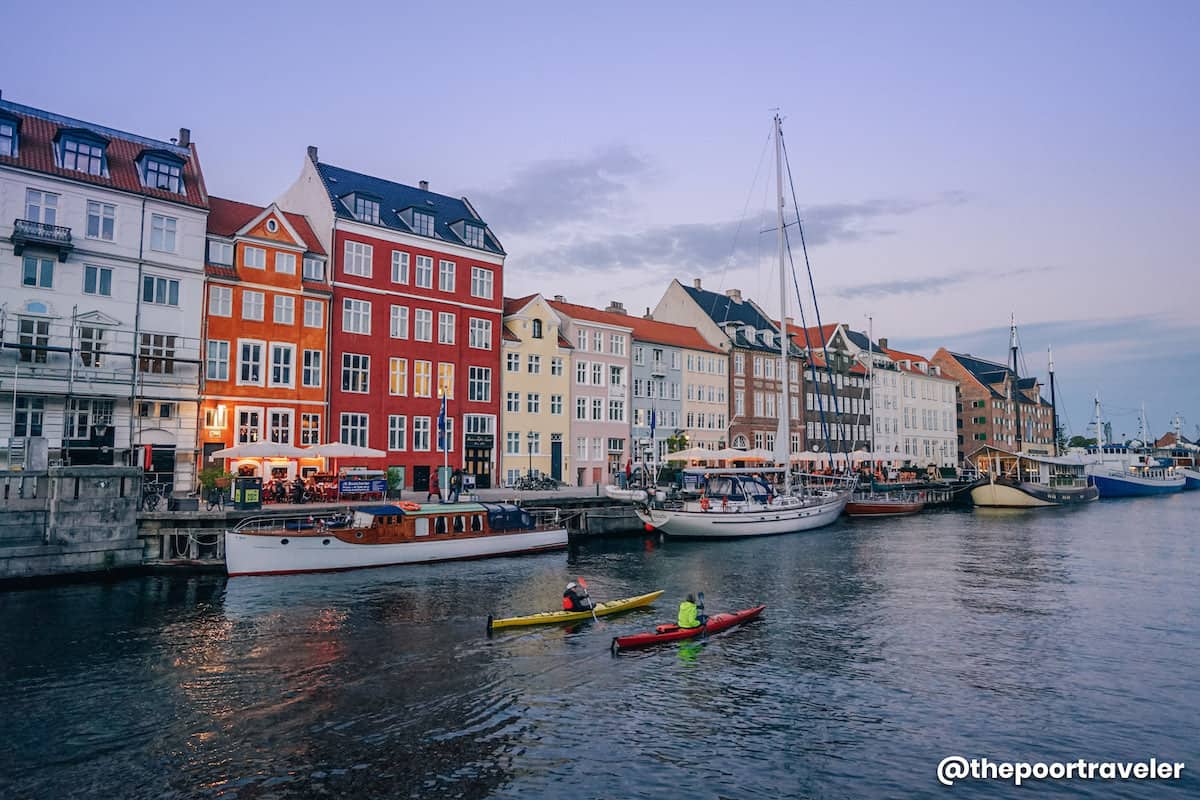
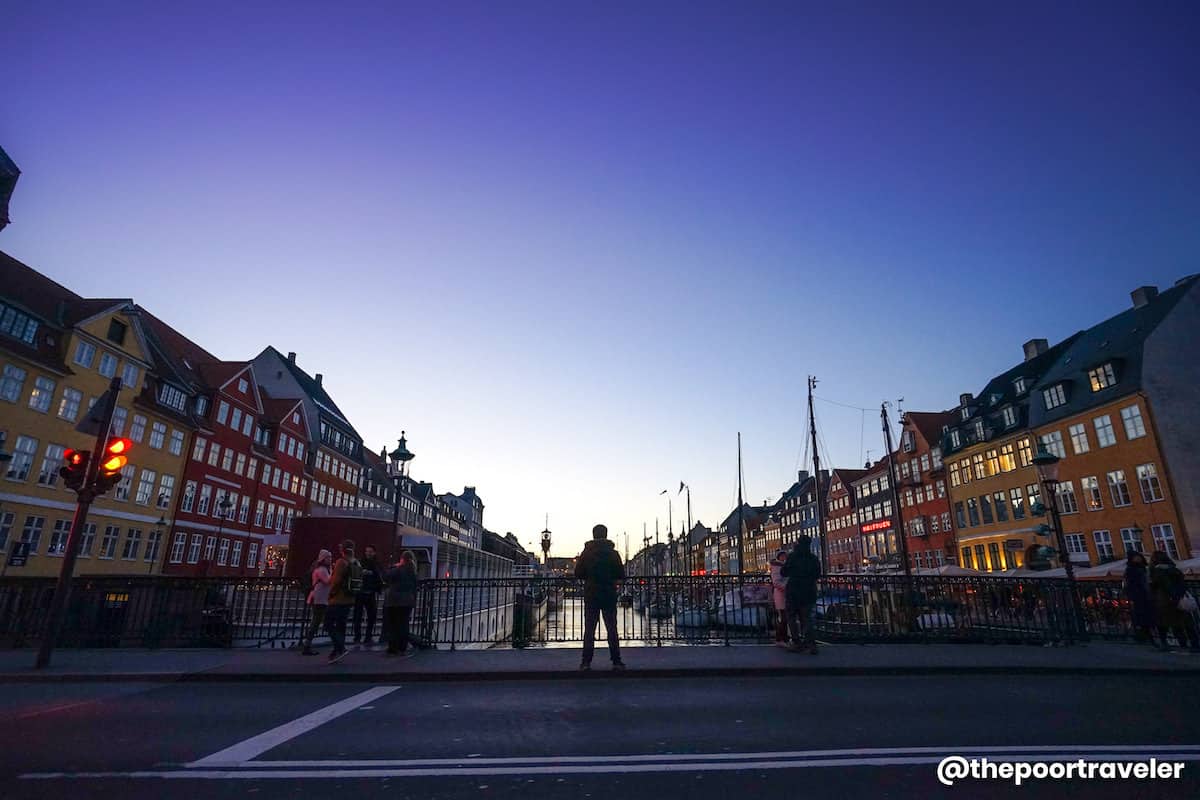
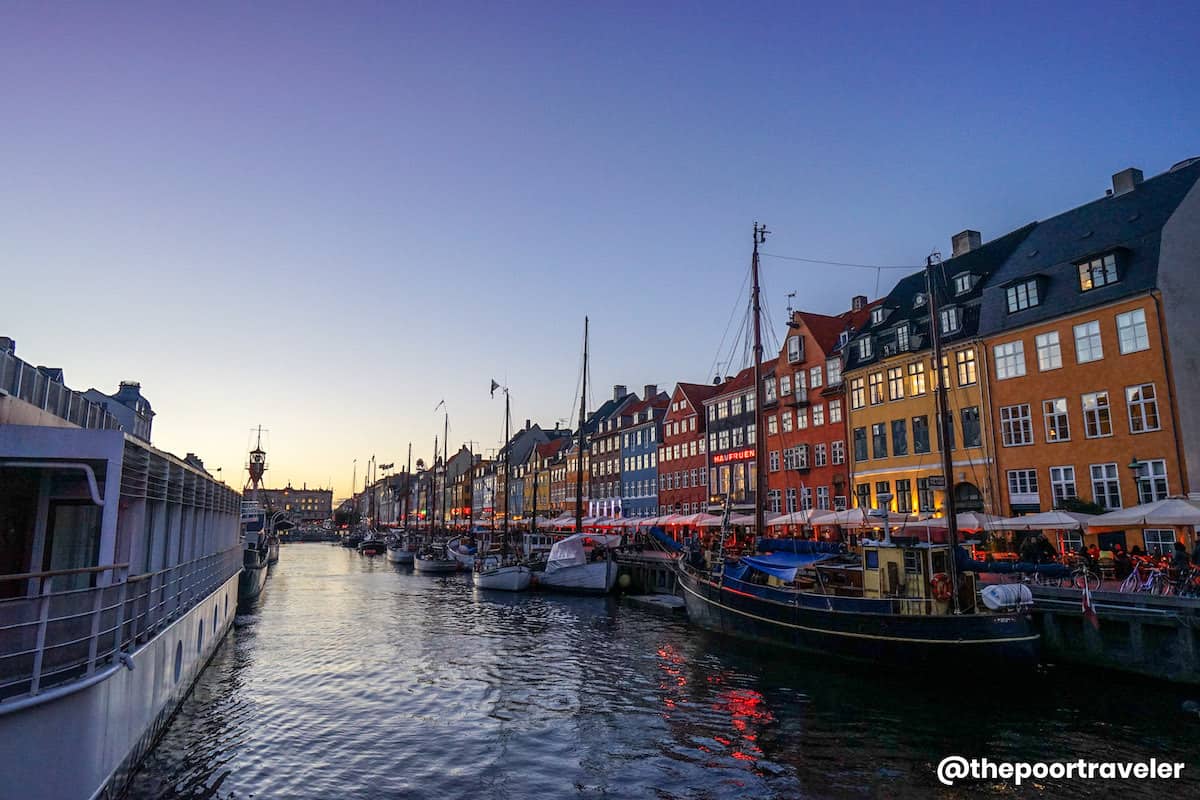
But the most prominent landmarks and attractions are the renovated 17th- and 18th-century townhouses painted in bright and bold colors. The famed fairytale author Hans Christian Andersen used to reside in three townhouses (#18, #20, #67) along Nyhavn.
Location: Nyhavn, Indre By, Copenhagen, Denmark
Nearest Train Station: Kongens Nytorv Metro Station
10. Nationalmuseet
Housed in the 18th-century Prince’s Mansion, the former official residence of the Prince of Denmark, Nationalmuseet (National Museum of Denmark) is the country’s largest cultural history museum housing tens of thousands of Danish artifacts, accounting for the country’s history — people, culture, and heritage.
Some of the noteworthy pieces are the Egtved Girl coffin, the Trundholm Sun Chariot, the Gundestrup cauldron, and the Hjortspring boat among others.
Other collections include items from other countries and foreign cultures.
Address: Nationalmuseet, Prince’s Mansion, Ny Vestergade 10, 1471 København K, Denmark
Opening Hours: September to June 10:00 AM – 5:00 PM (Tuesday – Sunday), CLOSED (Mondays); July to August 10:00 AM – 5:00 PM (Daily). Note that the opening schedule might change, so check the official website for updates and announcements.
Entrance Fee: KR 100 (Regular), FREE (Below 18 y/o)
Nearest Train Station: Copenhagen Central Station
Official Website: en.natmus.dk/museums-and-palaces/the-national-museum-of-denmark
11. Copenhagen Botanical Garden
A 10-hectare green space right in the city center!
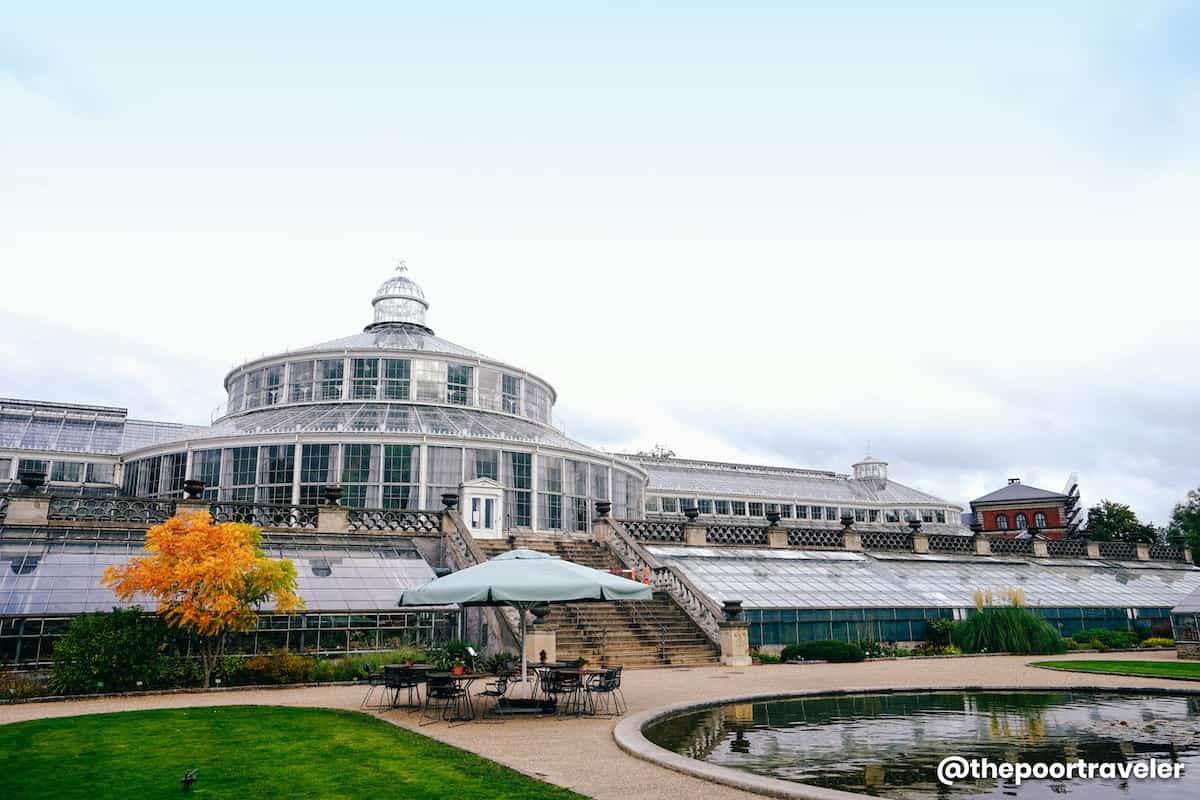
Managed by Denmark’s National Museum of Natural History, the University of Copenhagen Botanical Garden (simply called Copenhagen Botanical Garden), houses the biggest collection of plants in the country. It draws people who are interested in gardening and botany as well as those who are seeking a tranquil place amid the busy city center.
Founded in 1600, the current location is not the original, but its roots can be traced back to 1870. It functions as a research center, an educational venue, and a leisure space. It hosts over 13,000 species of plants and trees. The extensive garden encompasses 27 glasshouses, some dating back to 1874. The most outstanding of all glasshouses is the 3000-square meter Palm House.
The botanical garden also features a museum, an herbarium, conservatories, a library, a seed bank, a plant shop, and a café.
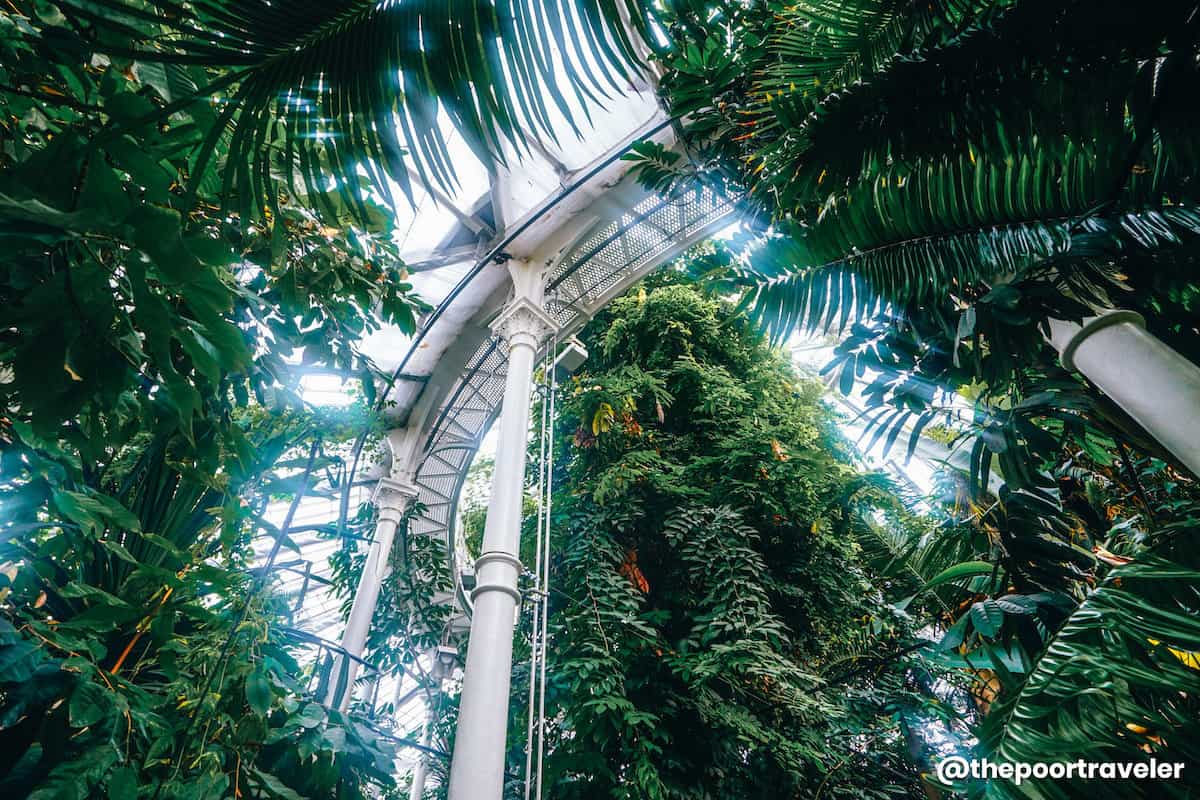
Location: Copenhagen Botanical Garden, Gothersgade 128, 1123 København K, Denmark
Opening Hours: Botanical Garden 8:30 AM – 6:00 PM (April – September), 8:30 AM – 4:00 PM (October – March); Palm House 10:00 AM – 5:00 PM (April – September), 10:00 AM – 3:30 PM (October – March)
Entrance Fee: Botanical Garden FREE; Palm House KR 60 (Adult), KR 40 (3-17 y/o), FREE (0-2 y/o)
Nearest Train Station: Nørreport Station or Nørreport Metro Station
Official Website: www.snm.ku.dk/english/visit-the-museum
12. Rosenborg Castle
The Rosenborg Castle was commissioned by the notable Scandinavian king, Christian IV. Its construction started in 1606 and completed in 1624. The castle’s architecture follows the Dutch Renaissance design.
Located within the King’s Garden (Kongens Have), also called Rosenborg Castle Garden, it was originally used as a summerhouse and eventually became the royal residence of the Danish regents until the early 18th century. The castle was opened to the public near the middle of the 19th century.
The Rosenborg Castle features a museum that displays the royal art treasures, the crown jewels, royal regalia, Venetian glass collections, and the Flora Danica porcelain collection. Points of interest are the Knights’ Hall (Long Hall) — with its twelve tapestries, three life-size silver lions, and coronation thrones — and the king’s private chambers.
The garden, which is the oldest royal garden in Denmark, houses structures that are part of the Parkmuseerne Museum District including the Rosenborg Castle.
Guided tours are also available.
Address: Rosenborg Castle, Øster Voldgade 4A, 1350 København K, Denmark
Opening Hours: Castle 11:00 AM – 4:00 PM (Tuesday – Sunday), CLOSED (Mondays). King’s Garden 7:00 AM – 5:00 PM (or 11:00 PM). Note that the opening schedule might change, so check the official website for updates and announcements.
Entrance Fee: KR 120 (Adult), KR 85 (Students), FREE (Below 18 y/o). A combination ticket for Rosenborg and Amalienborg is KR 170.
Nearest Train Station: Nørreport Station, Nørreport Metro Station, or Kongens Nytorv Metro Station
Website: www.kongernessamling.dk/en/rosenborg
13. Freetown Christiania
Freetown Christiania, or simply Christiania, used to be a military base taken over by a group of hippies after it was abandoned in 1971. For so many years since the establishment of the community, the residents created their own rules and laws, independent of the Danish Law. Eventually, it became known as a hub for the cannabis trade with Pusher Street (Green Light District) as the main attraction and the business center.
This seven-hectare “hippie” community still exudes the 70s vibe and has more or less 1,000 residents, including some of the pioneer settlers. Today, the community is somehow controlled, but not totally. It’s open to tourists, so there are cafés, restaurants, and souvenir shops. It also provides venues for music events.
For tourists who want to explore the area, there are rules that you need to adhere to. In the past, taking photos is not allowed, especially at the Green Light District or Pusher Street. Although it is now allowed, it’s best to always ask permission first before taking photos.
Location: Christiania, Christianshavn, Copenhagen, Denmark
Nearest Train Station: Christianshavn Metro Station
Official Website: www.christiania.org
14. Designmuseum Danmark
Founded in 1890, Design Museum officially opened to the public in 1895 and was first housed in a building on present-day H.C. Andersens Boulevard. In 1926, the museum was then moved to its present location — the 18th-century Rococo building and the former Royal Frederik’s Hospital.
The museum ground features a garden that also serves as an exhibition space and a breathing space. It houses a wide array of Danish and international designs and crafts.
The museum aims to showcase brilliant craftsmanship, exemplary designs, and quality decorative arts. It also seeks to inspire designers, manufacturers, and consumers to be more critical and quality-conscious.
The museum has a shop and a café that operate in summer.
Address: Designmuseum Danmark, Bredgade 68, 1260 København K, Denmark
Opening Hours: CLOSED until 2022
Entrance Fee: KR 115 (Adult), KR 80 (Senior 65+), FREE (Students and below 26 y/o)
Nearest Train Station: Marmorkirken (Marble Church) Metro Station or Østerport Train Station
Official Website: www.designmuseum.dk/en
15. CopenHill
A sustainable and eco-friendly space that cradles both a waste-to-energy plant and sports facility!
The waste management plant was launched in March 2017 aiming to turn solid waste into energy with less, and eventually zero, carbon emission.
What’s amazing about the building structure is that the sloping roof also serves as a manmade ski slope, hiking area, and climbing wall, drawing sports enthusiasts any time of the year. The urban mountain sports complex also has a regular café, a rooftop café, and a bar. Enjoy the view of southern Copenhagen when you reach the rooftop.
The area is also called Amager Bakke (Amager Hill) or Amager Slope.
Address: CopenHill, Vindmøllevej 6, Amager, 2300 København, Denmark
Opening Hours: General 12:00 PM – 8:00 PM (Monday – Friday), 10:00 AM – 8:00 PM (Saturdays), 10:00 AM – 6:00 PM (Sundays); Ski Slope 2:00 PM – 8:00 PM (Monday – Friday), 10:00 AM – 8:00 PM (Saturdays), 10:00 AM – 6:00 PM (Sundays). Note that the opening schedule might change, so check the official website for updates and announcements.
Entrance Fee: FREE for those who only want to explore the trails, the Garmin Track, the staircase, the elevator to the rooftop, and the dining places.
Ski Pass: KR 150 per hour (Adult), KR 105 (Below 10 y/o)
Nearest Bus Stop: Amagerværket Stop (Bus 37), Kraftværksvej, Østhavnen Stop (Bus 37)
Official Website: www.copenhill.dk/en
16. Assistens Cemetery
Located in the Nørrebro neighborhood, Assistens Cemetery is one of the most famous tourist destinations in Copenhagen.
Established in the middle of the 18th century as a cemetery for the poor, the Assistens Cemetery eventually became most notable as the final resting place for prominent Danish personalities including Hans Christian Andersen (fairytale writer), Søren Kierkegaard (philosopher), Christoffer Wilhelm Eckersberg (painter), Christen Købke (painter), and Niels Bohr (physicist) among others. For this, the cemetery is regarded as a cultural treasure.
It is also Nørrebro’s largest green space and the residents’ favorite public park. There are many benches scattered around the cemetery grounds. The wide lawns provide relaxing spots where people can just hang out under the shade of trees or bask in the sun. This is a bicycle-friendly area too!
Location: Assistens Cemetery, Kapelvej 2, Nørrebro, 2200 København N, Denmark
Opening Hours: 7:00 AM – 10:00 PM (Daily)
Nearest Train Station: Nørrebros Runddel Metro Station or Nuuks Plads Metro Station
17. Amalienborg Palace
This 18th-century Rococo palace ground is located between the city and the harbor.
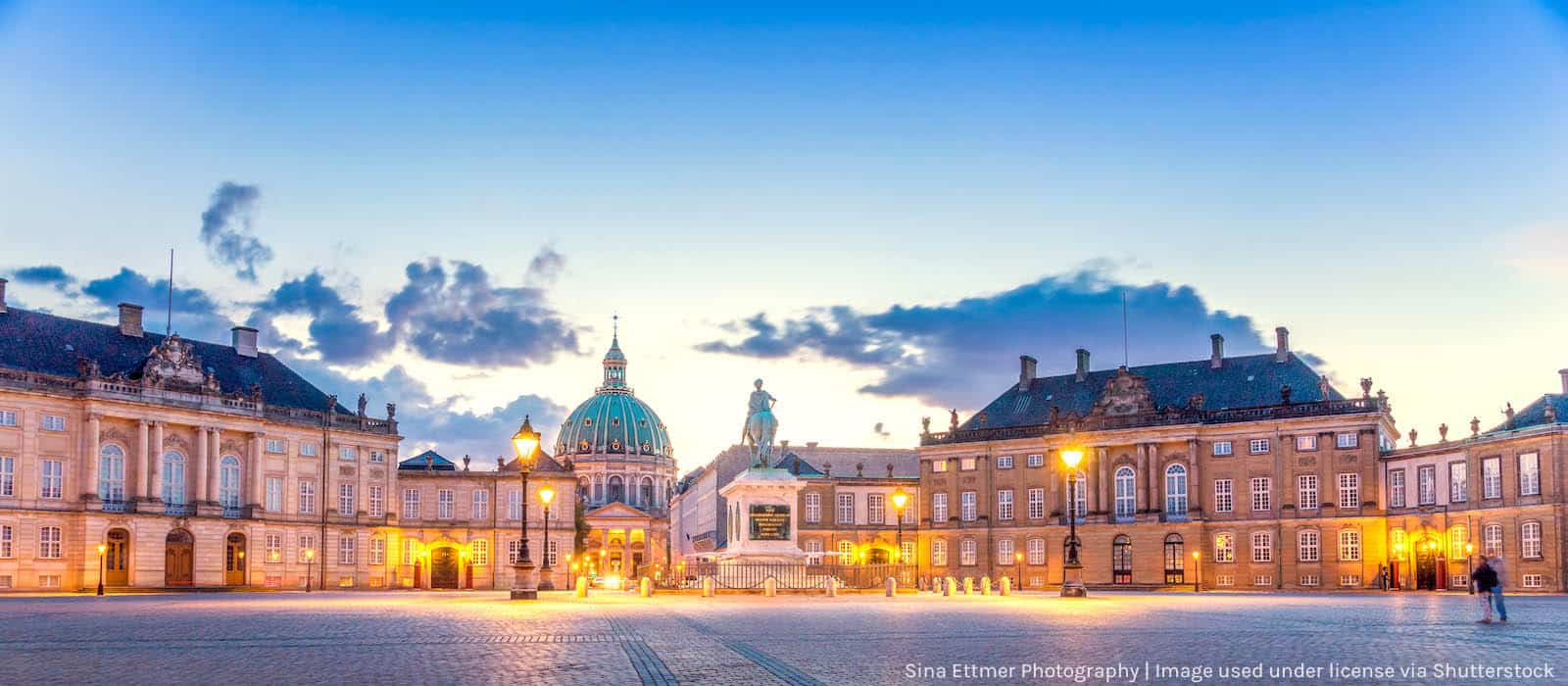
The Amalienborg Palace Square was designed by architect Nicolai Eigtved as a mansion complex for the family of four highly distinguished aristocrats. The construction took ten years to complete (1750-1760). The square features the equestrian statue of King Frederik V as the centerpiece, surrounded by four identical palaces:
- Christian VII’s Palace. Originally named Moltke’s Palace and located southwest of the palace square, this functions as the official reception for Queen Margaret’s guests. This palace is not accessible to everyone.
- Christian VIII’s Palace. Originally named Levetzau’s Palace and located northwest of the palace square, the palace hosts the Amalienborg Museum. Learn more about the history of the royal family and get a glimpse of their daily lives when you visit the museum.
- Frederik VIII’s Palace. Originally named Brockdorff’s Palace and located northeast of the palace square, this is the official royal residence of Crown Prince Frederik and Crown Princess Mary. This palace is not accessible to the public.
- Christian IX’s Palace. Originally named Schack’s Palace and located southeast of the palace square, this serves as the official residence of Queen Margrethe II and the Prince Consort. This is not accessible to the public.
It eventually became the royal residence when the old Christianborg Palace was destroyed by fire in the late 18th century.
Aside from the palaces, the square, and the museum, another attraction is the changing of guards. Post replacement happens every two hours throughout the day, but the complete changing of guards is conducted at noon (12PM).
Don’t forget to check the two-level waterfront garden park, the Amaliehaven (Amalie Garden), situated east of Amalienborg Palace complex.
Address: Amalienborg Palace, Amalienborg Slotsplads 5, 1257 København K, Denmark
Opening Hours: 11:00 AM – 4:00 PM (Tuesday – Sunday), CLOSED (Mondays). Note that the opening schedule might change, so check the official website for updates and announcements.
Entrance Fee: KR 95 (Adult), KR 65 (Students), FREE (Below 18 y/o). A combination ticket for Rosenborg and Amalienborg is KR 170.
Nearest Train Station: Marmorkirken (Marble Church) Metro Station
Website: www.kongernessamling.dk/en/amalienborg
18. Torvehallerne
Copenhagen’s kitchen!
Officially opened to the public in September 2011, TorvehallerneKBH is the most popular marketplace in the city, visited by over a hundred thousand locals every week. Housing some of the city’s famous homegrown food establishments, this is a total paradise for foodies and for those who want to taste Danish delicacies and other favorite international cuisines. You can also find fresh produce, fish, and meat.
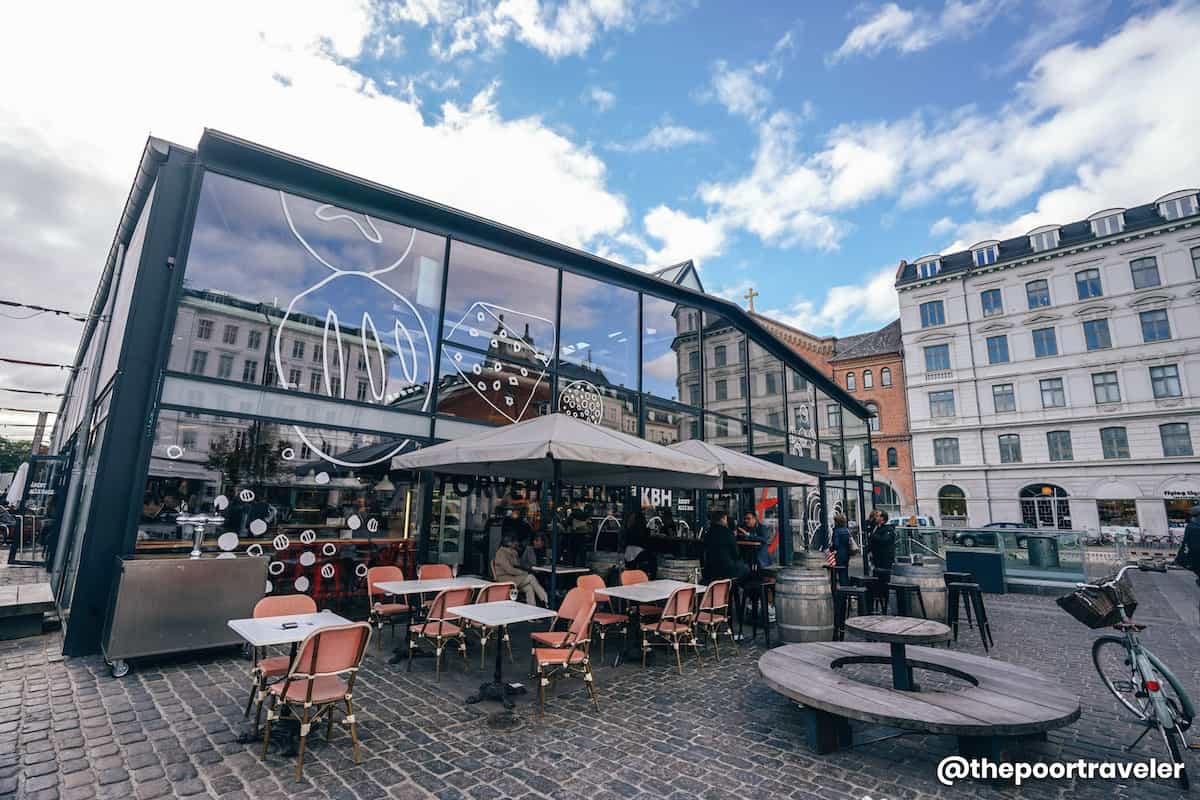
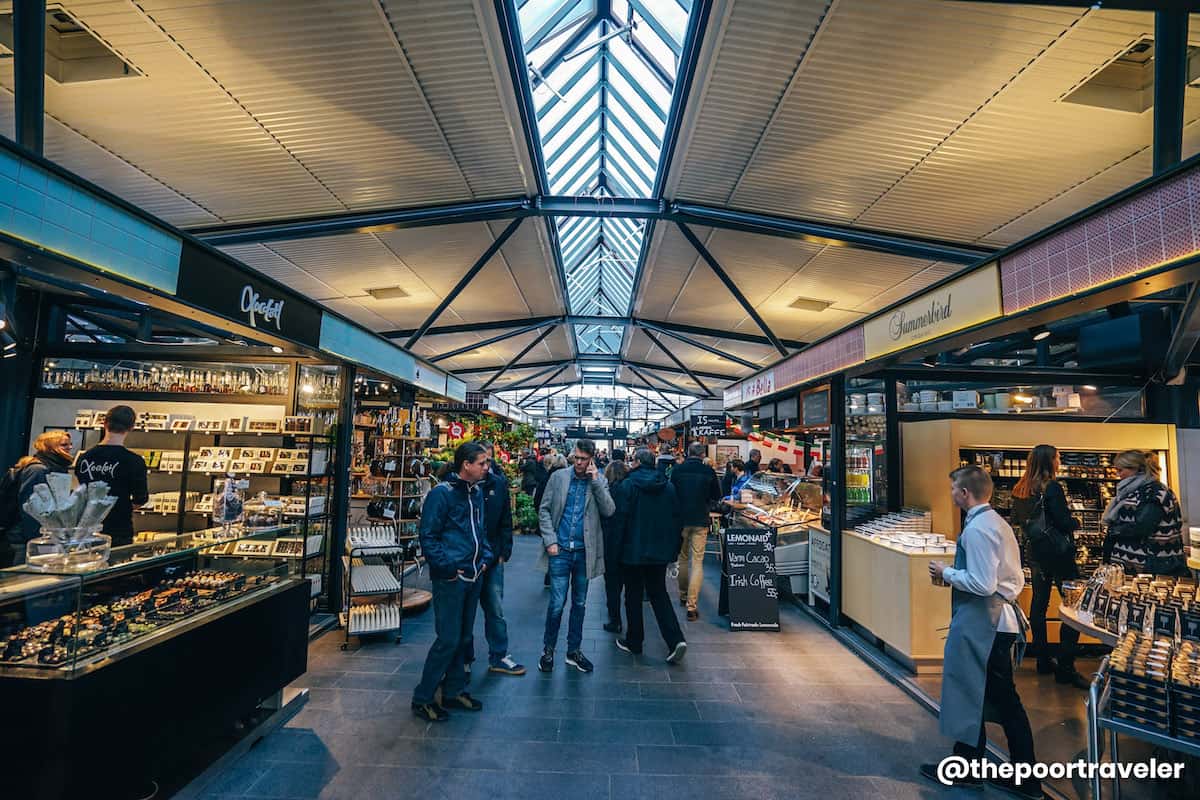
Address: TorvehallerneKBH, Frederiksborggade 21, 1360 København K, Denmark
Opening Hours: 10:00 AM – 7:00 PM (Monday – Friday), 10:00 AM – 6:00 PM (Saturday – Sunday)
Nearest Train Station: Nørreport Station or Nørreport Metro Station
Official Website: www.torvehallernekbh.dk
19. Copenhagen Street Food – Reffen
This laidback and eco-friendly project follows the dogma “reduce and reuse” and aims to achieve more sustainable and environment-friendly endeavors, may it be food, entrepreneurship, design, and culture. It’s a friendly place for startups and artists to showcase their products and crafts. The area is buzzing with various activities — concerts, talks, workshops, games, and many others.
But if you are into street food, this is definitely a worthy stop! Boasting a wide range of street food options, you might find yourself constantly drooling from stall to stall.
It faces the harbor, so you can also find a spot where you can lounge and just enjoy the view of the canal, the sunset, and the liberating vibe with a drink in one hand and a grub in another.
Note that all the stalls and bars only accept card payment. You can get a prepaid card at Little Village. If you still have credits left, you can also change it to cash at the Little Village.
Currently, you can find this food hall in the Refshaleøen area, in the outskirts of the city. But this is already their second location. During our visit, it was on Paper Island and it was called Copenhagen Street Food – PapirØen. Of course, the look and feel have changed since they moved. But here are some pics from our visit to their previous site.
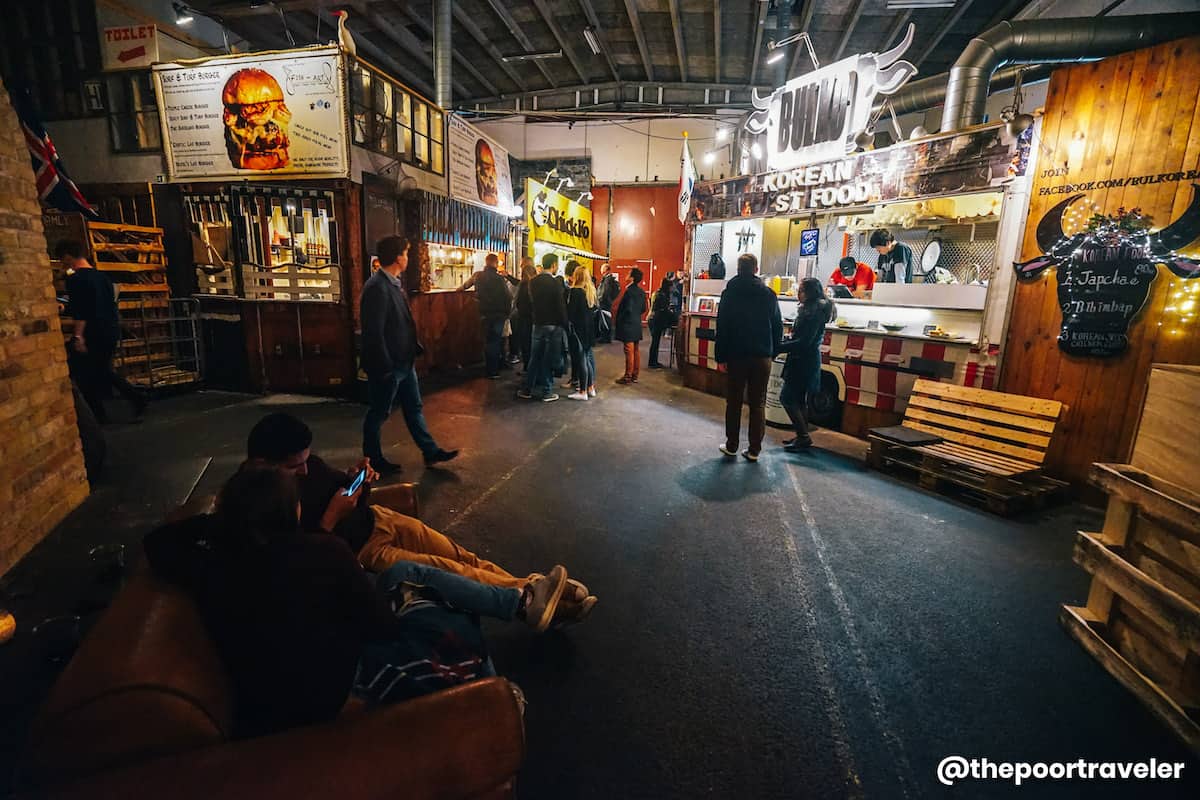
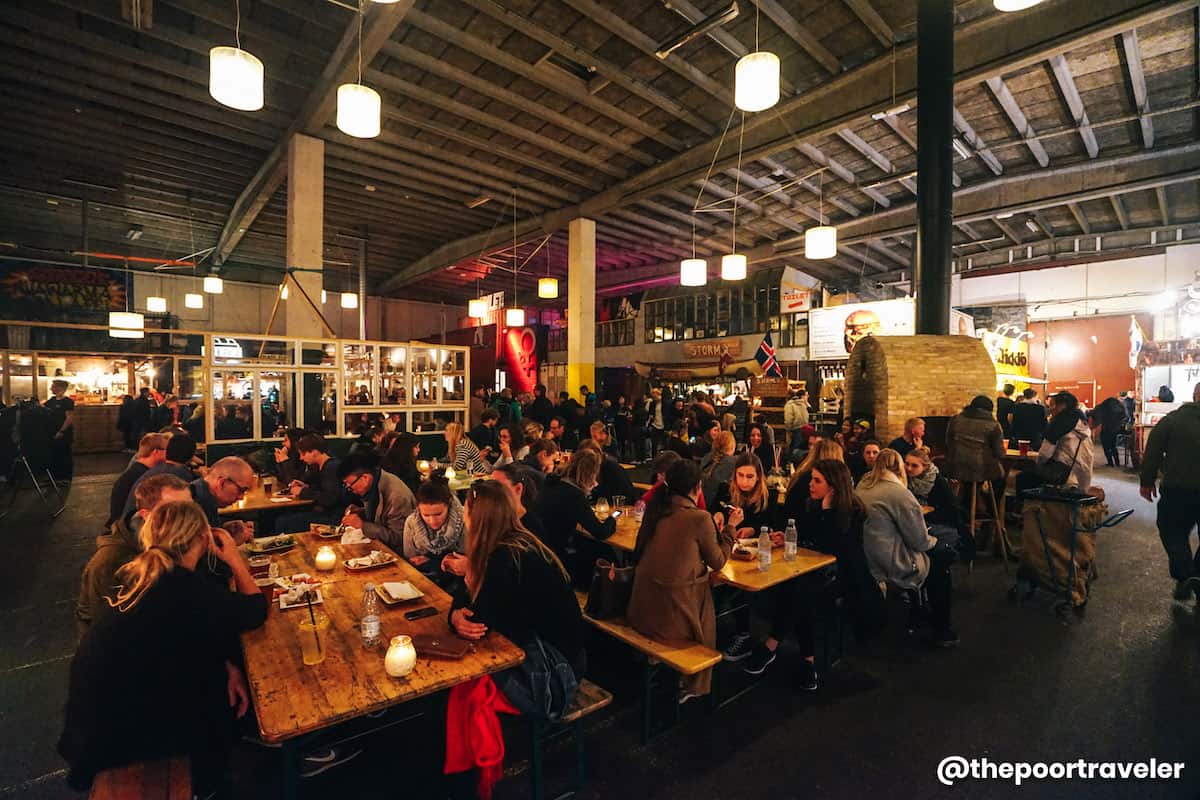
Address: Reffen, Refshalevej 167 Unit A, 1432 København, Denmark
Opening Hours: Please check the official website for the latest updates and announcements.
Nearest Bus Stop: Refshaleøen/Refshalevej (Bus 2A)
Official Website: www.reffen.dk/en
20. Sømods Bolcher Hard Candy Factory
Championing traditional candy making for over a hundred years, Sømods Bolcher has a history that goes as far back as 1891! In 1932, the factory was moved to its present-day location at Nørregade 36. Regardless, visitors flock to this time capsule to witness the century-old method of making candies. The factory is now managed by fifth-generation candy makers.
You can also treat yourself to some sweets and choose from over 70 flavors. Not into sweets and gluten? You can check out the special candies. Sømods Bolcher has sugar-free, gluten-free, vegan/vegetarian, and hypoallergenic options!
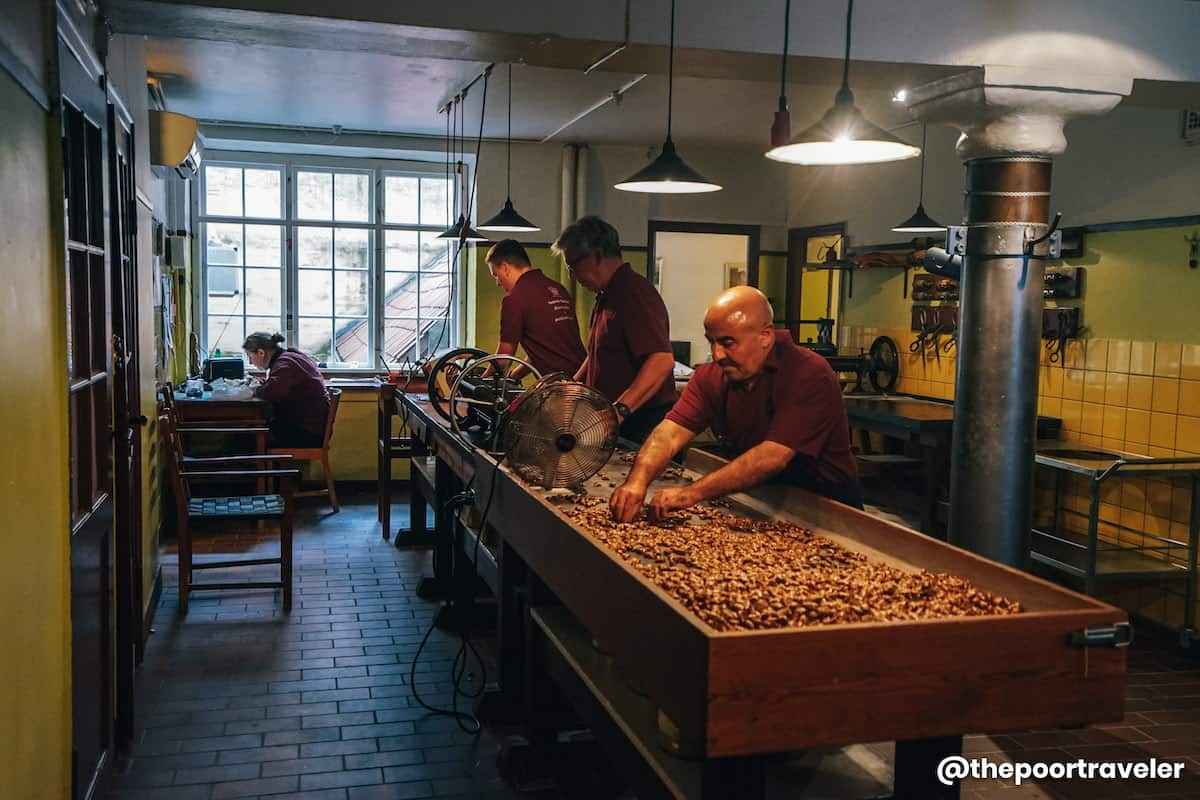
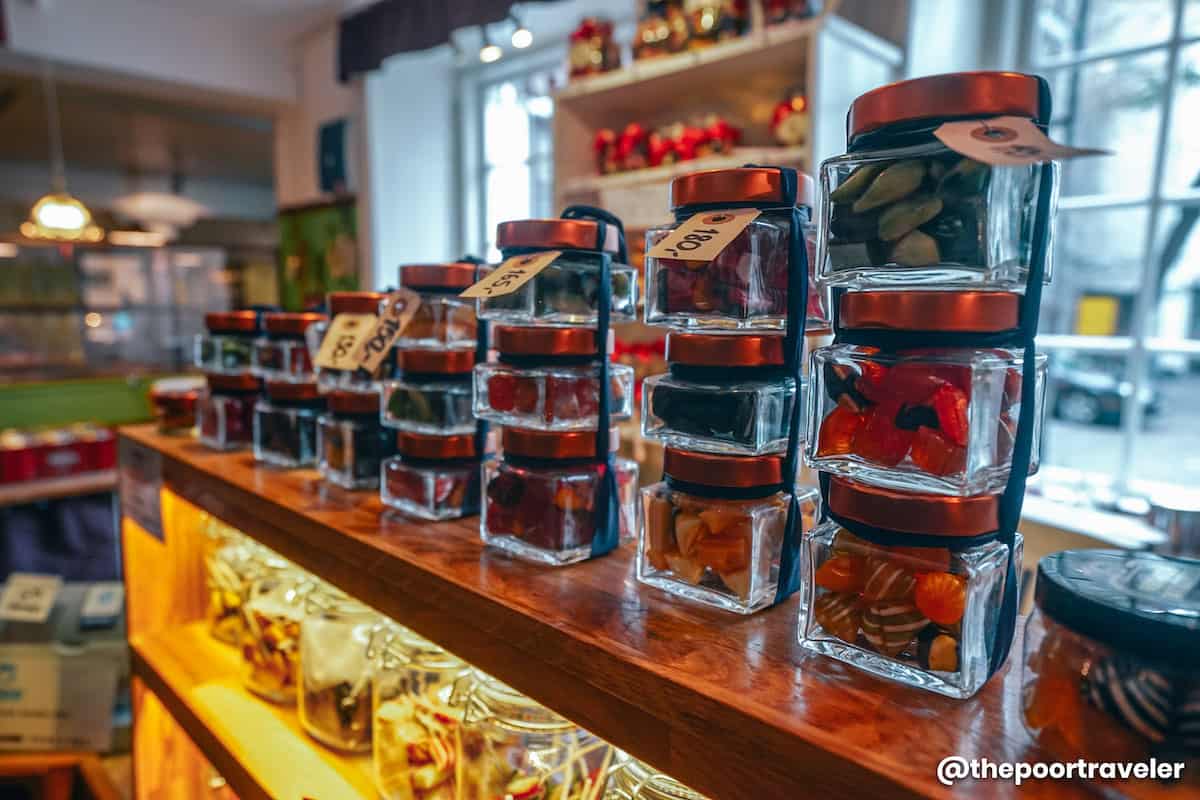
Address: Sømods Bolcher, Nørregade 36B, 1165 Copenhagen K, Denmark
Opening Hours: 9:15 AM – 5:30 PM (Monday – Thursday), 9:15 AM – 6:00 PM (Friday), 10:00 AM – 3:30 PM (Saturday), 11:00 AM – 3:00 PM (Sunday)
Nearest Train Station: Nørreport Station or Nørreport Metro Station
Official Website: www.soemods.com
21. Danish Baking Class
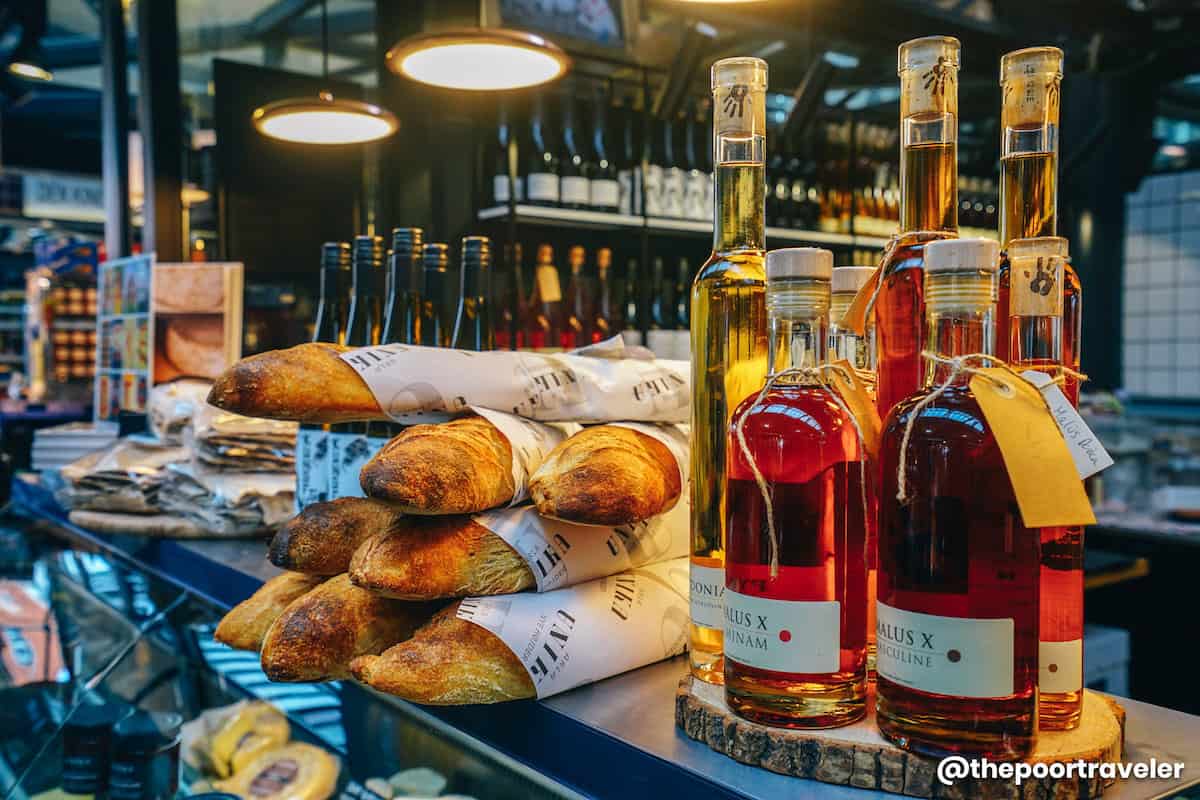
This is a very immersive way of learning more about Danish bread and pastries! A professional chef will teach you how to make your own bread, particularly traditional pastries like rye bread, and sourdough buns. Know the techniques and the proper baking methods.
At the end of the lesson, you will get to taste your own creation. Don’t worry, you will also get a copy of the recipe, so you can practice and try it at home.
22. Camp Adventure Park
If you can afford to spend more days in Denmark and you want to take a break from the hustle and bustle of the city, Camp Adventure Park in South Zealand is a worthy side trip, especially for adventurous and nature lovers. TIME Magazine hailed it as one of the World’s 100 Best Places to Visit.
Located about two hours from Copenhagen, the adventure park is the largest in Denmark, housing picnic areas, adventure courses, an indoor climbing area (Climbing Park), glamping tents, and a café in a sprawling lush forest. It brags having one of the longest ziplines in Europe!
But the most significant feature is the 45-meter tall Forest Tower, an architectural wonder designed by EFFEKT. The tower presents a spectacular 360-degree view of the surrounding area.
Address: Skovtårnsvej 1, 4683 Rønnede, Denmark
Opening Hours: 10:00 AM – 6:00 PM (April – October), 10:00 AM – 3:00 PM (November – March). The schedule may change from time to time, so please check first before booking/going.
Tickets: Forest Tower KR 150 (7 y/o and above), KR 65 (3-6 y/o), FREE (2 y/o and below); Climbing Park KR 350 (15 y/o and above), KR 250 (7-14 y/o), KR 150 (3-6 y/o); Combination KR 450 (15 y/o and above), KR 350 (7-14 y/o), KR 200 (3-6 y/o)
Nearest Train Station: Næstved St (Farimagsvej) or Holme Olstrup. From here take a bus (630R) and alight at Vester Egede (Ny Næstvedvej). The park entrance is 15-20 minutes on foot from the bus stop.
Official Website: www.campadventure.dk/en
You can get your Forest Tower admission ticket in advance online!
Top Copenhagen Hotels & Hostels
Here are some of the top hotels and hostels in Copenhagen, as scored by Agoda customers.

- Rye115 Hotel. Check Rates & Photos! ✅
- Copenhagen Island Hotel. Check Rates & Photos! ✅
- Adina Apartment Hotel Copenhagen. Check Rates & Photos! ✅
- a&o Copenhagen Sydhavn. Check Rates & Photos! ✅
- Urban Camper Hostel Copenhagen. Check Rates & Photos! ✅
- Generator Copenhagen. Check Rates & Photos! ✅
- Wakeup Copenhagen – Borgergade. Check Rates & Photos! ✅
- Ibsens Hotel. Check Rates & Photos! ✅
Search for more Copenhagen Hotels!
Edited by Asta Alvarez
Photos by Yosh Dimen & Vins Carlos
Additional photos licensed under Shutterstock
2021 • 05 • 06
